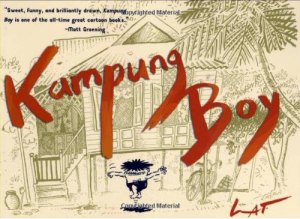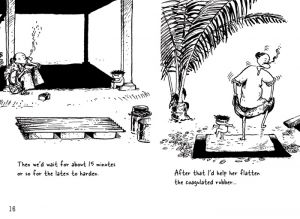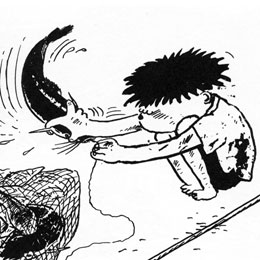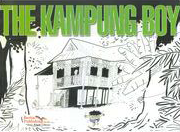Books
The Kampung Boy – A Classic Malaysian Graphic Novel
By Hervé St-Louis
March 12, 2012 - 23:34
Delivered in black and white, cartoonist Datuk Mohammad Nor Khalid (Lat), The Kampung Boy is a classic of Malaysian literature and has been celebrated in many languages. It’s a simple story about the first ten years of Lat in his small Kampung (village) before he was sent to boarding school. It’s an autobiographical work with light humour and some memorable graphics. It’s not Lat’s first book, but it certainly his most popular one well-known even outside of Malaysia.
 |
| First Second Book edition |
For decades, generations have fallen in love with the simple observation of Malaysian life hidden throughout this graphic novel. It’s not a panel by panel approach. Instead, Lat narrates the story from the sides and lets the visual take center stage. His drawings may seem crude. The characters’ noses look ugly and flat. But that’s what makes this book so charming. But important details about the Kampung, like the elevated homes, to protect against floods in the Monsoon season are easy to see. What I like about this book is the insouciance of the characters. It feels like a bright afternoon with
Tom Sawyer and his friends running around the village. It’s also very much like
Calvin and Hobbes’ world with adults butting in once in a while. Most important, The Kampung Boy shows the real Malaysia that you will not see if you visit Kuala Lumpur – or the one that existed in the 1950s.
The Kampung Boy is a coming out of age book – at least the part that I read. A kid whose father worked for the government befriends three brothers of lower class and learn about fishing swimming and collecting tin in a lake. Lat’s parents fought over this, worrying he would not pass his exams which would allow him to go to a boarding school in a far away city. This was the life of the middle class Malay. That shot at education would be what would offer him a chance to have a different of career than his poorer friends in the kampung. There is no dread and no evil in this world. Everything is simple and wholesome.
Like I wrote above, the cartoony features of the characters don’t take away from the detailed backgrounds that surround them. It’s a technique that has worked for Hergé’s
Tintin. Many have compared Lat’s visuals to Charles Schultz’s
Peanuts. I think they have more energy and demonstrate a more playful use of inks. There are also many contrasts and pages with large amounts of blacks and shadows. It’s not always easy to tell which character is which though, and that detracts from the work. It’s easy to understand how Malaysian comics have become so strong, with foundational works like Kampung Boy, local artists had no choice but to rise to the occasion.
The edition of the book I had is not the First Second Books’ edition released in 2006. Mine is the local version bought in Kuala Lumpur and paid at the advantageous Malaysian price. The version from First Second Books is ten times more expensive. Some of the words are cut off the page and other captions are way too close to the edge for a comfortable read. But the book was a wide soft cover book easy to read. Since this book is easy to get in North America, I can only recommend it to all readers. It’s a good book for kids, but also enjoyable for adults.
Rating: 9 /10
Last Updated: January 17, 2025 - 08:20



